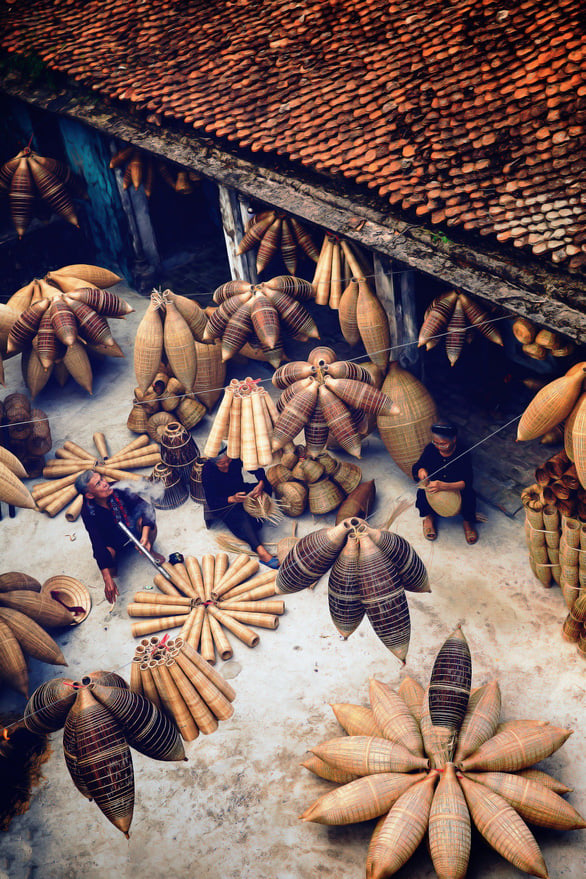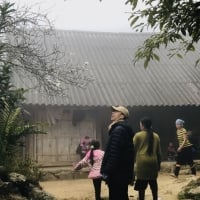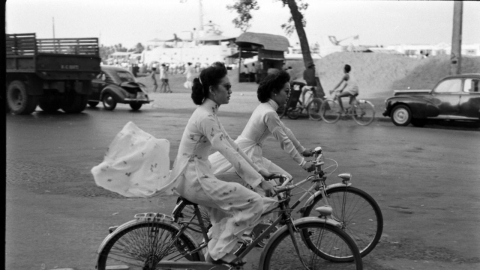Village culture is the soul, the “root of national culture”. It is not certain when the village was formed, but from its name it can be affirmed that “village” is a purely Vietnamese social entity, which cannot be mixed with, nor can it be destroyed for thousands of years.
No matter how times change, how society develops, there is an underground stream that always penetrates into the general flow of the times: the underground stream of village culture. Despite the massive "migration" to the city every day, there are villages in the North that are still peaceful after the ups and downs of change.
1. Dong Ngac – A village in the city
Dong Ngac, whose colloquial name is Ve or Ke Ve village, is one of the oldest villages in Hanoi. The ancients still say: "Ke Gian land, Ke Ve mandarin" to express pride in the village where all the clans have people who passed the imperial examinations.

Photo: Mai Lan
CNN once wrote about Dong Ngac: a thousand-year-old scholar village that has been outside the urbanization process of Hanoi over the past 20 years. Stone gates marking the village, street vendors wearing conical hats, children playing outside the 17th-century Tu Khanh pagoda, all create an original, rustic look for this ancient village on the outskirts of the city.

Ancient house in the middle of Ke Ve village. Photo: Mai Lan
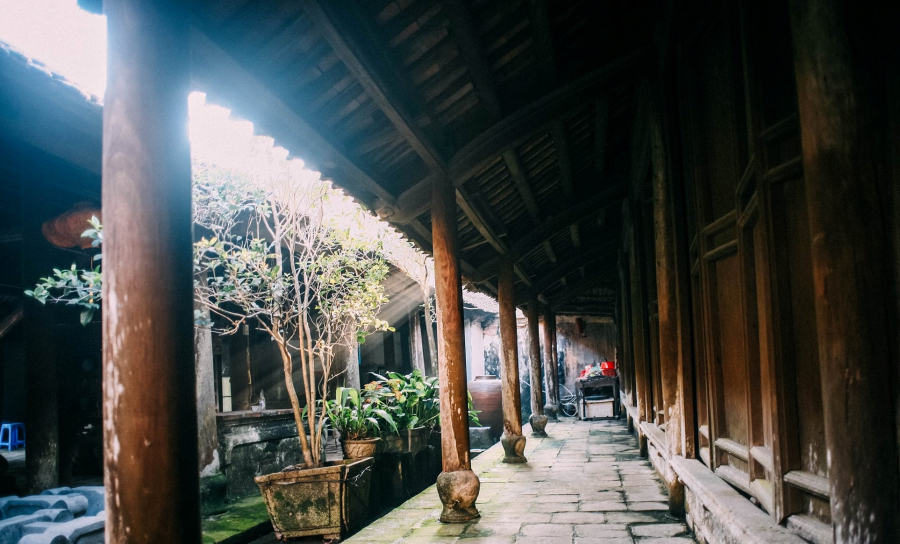
Ancient house in the middle of Ke Ve village. Photo: Mai Lan

The houses combine traditional and modern architecture from the French colonial period.
The village has nearly 100 ancient houses, the oldest of which was built in 1600. The moss-covered houses nestled in small alleys were once symbols of modern Asian-European architecture.
Address:Dong Ngac ward, Bac Tu Liem district, Hanoi city.
2. Duong Lam – The Forgotten Ancient Town
Duong Lam is known as the land of two kings, the birthplace of Phung Hung and Ngo Quyen. This is also a rare village in Hanoi that still retains the typical Red River Delta countryside landscape system: banyan trees, water wharves, communal house yards, and small, winding alleys arranged in the shape of fish bones.

In terms of architectural scale, Duong Lam is only behind Hoi An Ancient Town and Hanoi Old Quarter. The symbol of Duong Lam village is Mong Phu communal house, nearly 400 years old, bearing the mark of Viet-Muong architecture, the village gate is built in the style of "upper house lower door" (ie the gate is below, the house is above) and more than 900 ancient laterite houses are gathered.

Duong Lam Village is a paid tourist attraction, visitors must park their vehicles and buy tickets at the gate. Ticket price: 20,000/person.
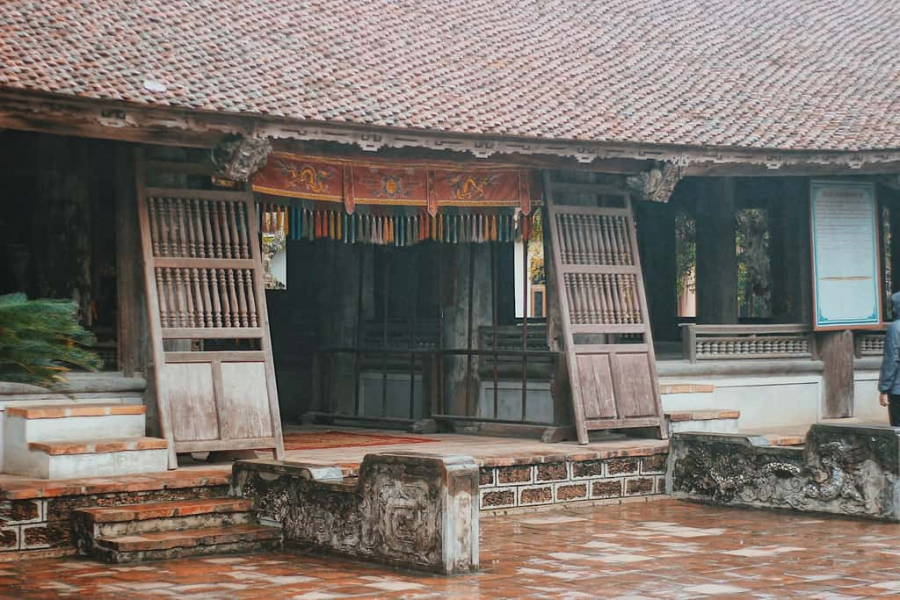
Dai Bai House.
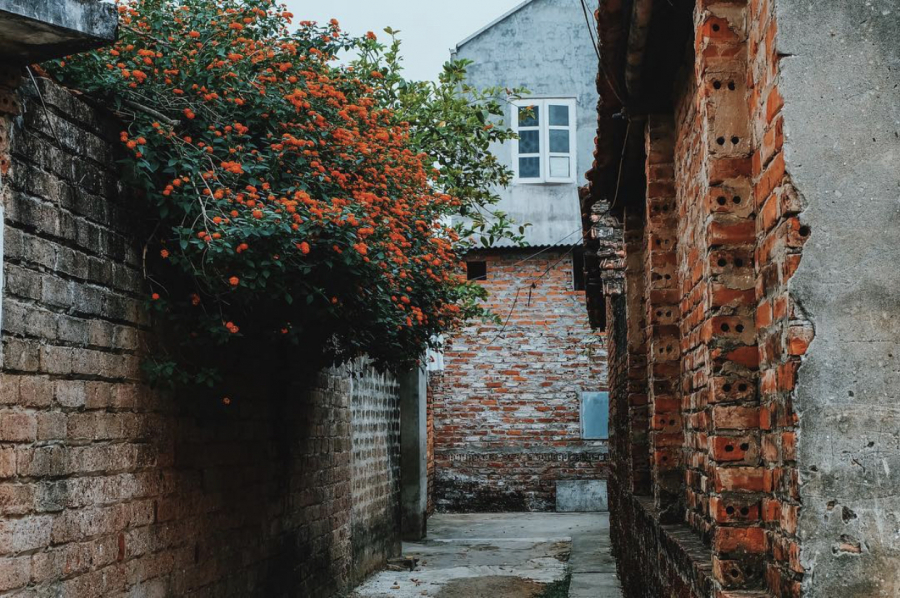
Many people come to Duong Lam sometimes just to enjoy a rustic meal imbued with the spirit of Northern Vietnam, with simple dishes mixed in a bowl of rich sticky rice sauce. The smell of the sauce rushes up to the nose, awakening a "distant time".
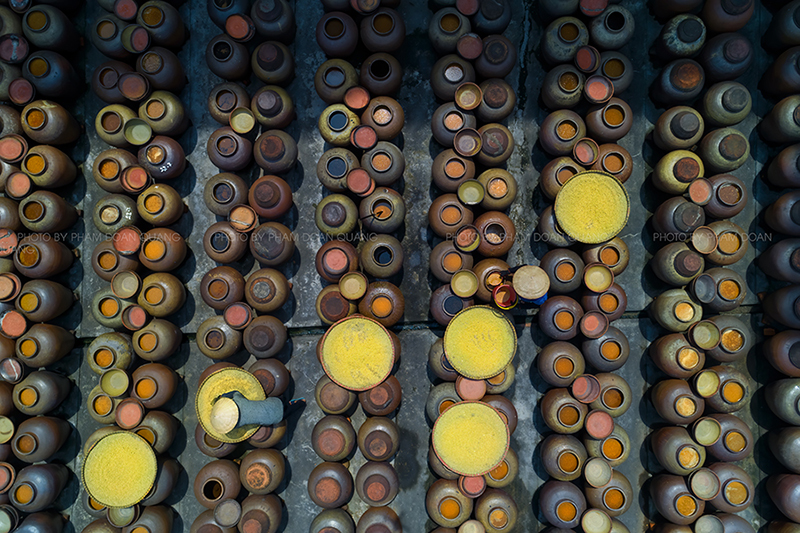
Traditional soy sauce making profession.
Called "Forgotten Ancient Town", the village is only 50 km from Hanoi, is a tourist attraction for domestic and international tourists, and has been recognized as a National Historical and Cultural Relic since 2006.
Address:Son Tay town, Hanoi city.
Note: When coming to Duong Lam, visitors can contact in advance and register to have dinner with the villagers.
3. Tho Ha – The island in the middle of Cau River
The name “Tho Ha” is probably due to the unique location of the village, with three sides bordering the Cau River and one side bordering the mountains. People entering and leaving the village must cross the ferry, separated from the noisy world on one side of the river. Therefore, houses in Tho Ha must be built high with many consecutive steps to adapt to each flood season on the river.

A small ferry terminal in Tho Ha village.
Tho Ha is the cradle of the ceramic industry. The traditional Tho Ha ceramic industry, before disappearing, existed and flourished for 600 years, becoming the main occupation to feed all the villagers. The vestiges of the golden age of Tho Ha ceramic industry still remain in every small alley, with unplastered walls, only bricks and fired tiles, small earthenware, broken ceramics stacked on top of each other to create a red oil painting with brown glaze.
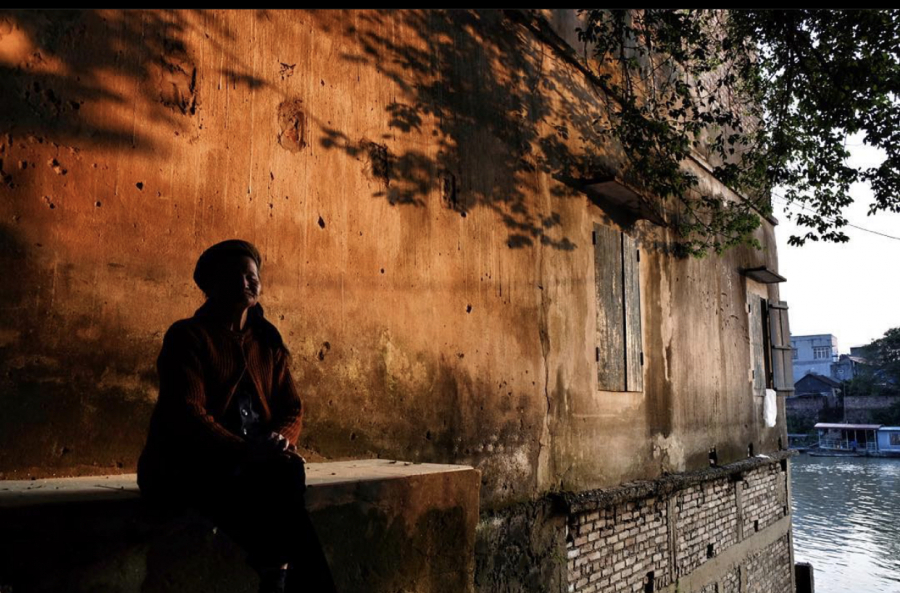
"The old brick wall" - A place that preserves memories and transfers the history of Tho Ha people, and is also a source of artistic inspiration for artists who come here.

"Old brick wall" - A place to preserve memories and transfer history of Tho Ha people.
In addition to ceramics, Tho Ha is also famous for its rice paper making. Visiting the village on a clear day, you will see rice paper sheets neatly arranged and dried all over the communal house yard and riverbank.

The communal house yard and alley are where people dry rice paper on sunny days.

Photo: Quy Nguyen

Address:Van Ha commune, Viet Yen district, Bac Giang province.
4. Nom Village – a century-old treasure
Nom Village is where visitors can find the intact culture of the Vietnamese rural market. In the past, Nom Market was the busiest market in Van Lam area. After 200 years, the market is still simple without reinforced concrete.
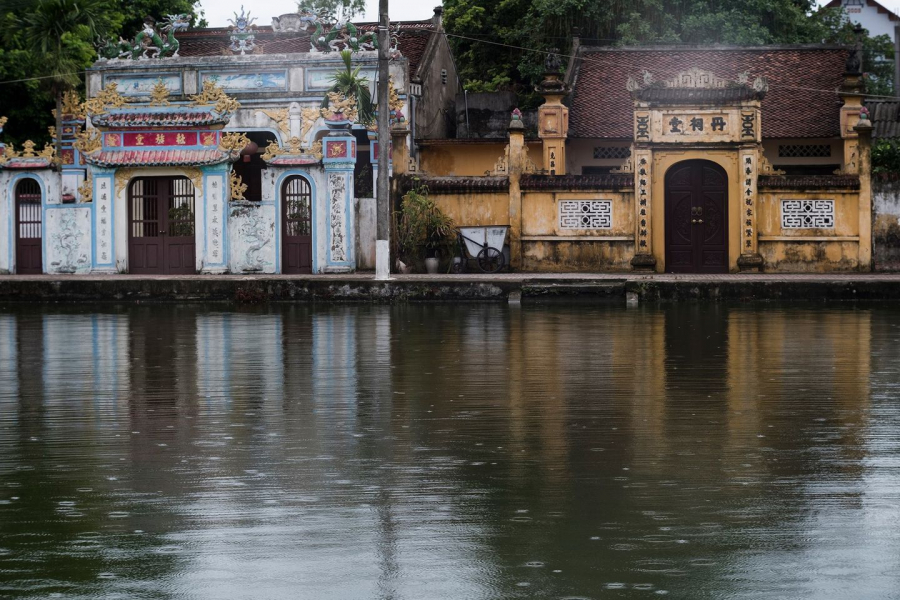
Nom village on a rainy afternoon. Photo: Vuong Quoc Cuong

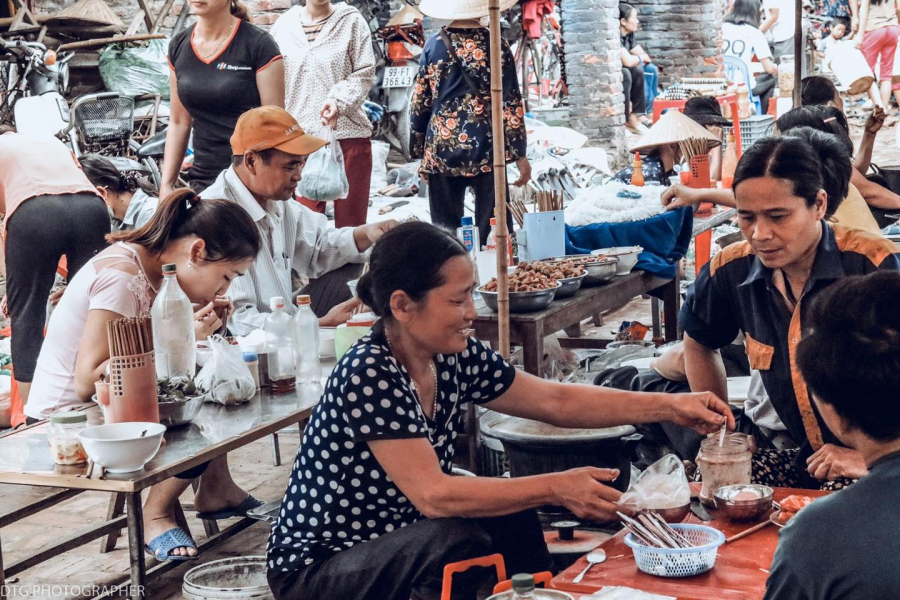
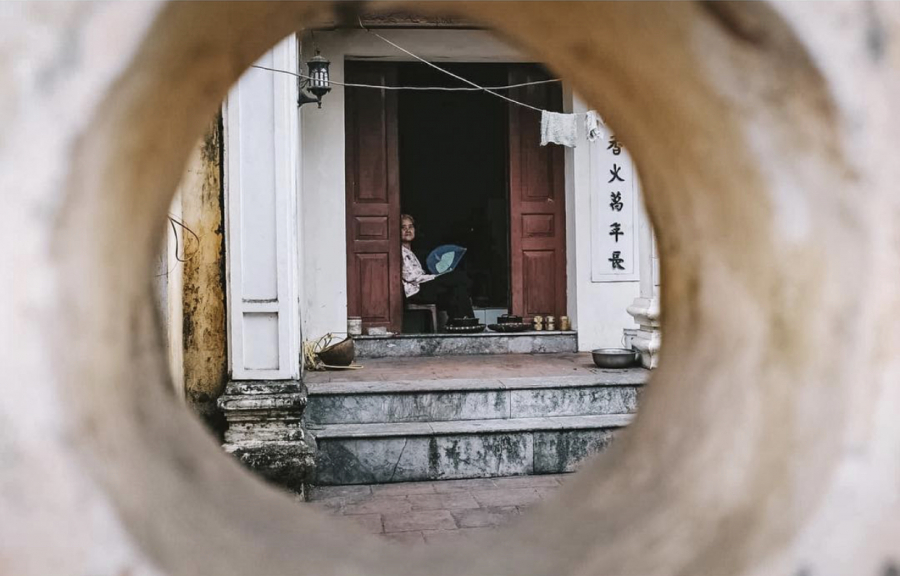
Old houses in the village...
Nom village has two special architectural works that cannot be found in any other Northern village: the village gate and the Nom bridge. The Nom village gate is built in the octagonal style, a type of gate formerly reserved for royalty. No one in the village, including the elders, knows the history of the gate. They only estimate that the village gate is more than 200 years old. The second work is the nine-span Nom bridge, connecting the village road to Nom market. On both sides of the bridge are jutting rocks shaped like dragon heads, carved elaborately, so the bridge is also called the nine-headed dragon bridge. From the remaining architectural system, it can be seen that the ancient trade of Nom village was extremely developed, so life was more prosperous than many other Northern villages, worthy of the name "Trang An of the North".
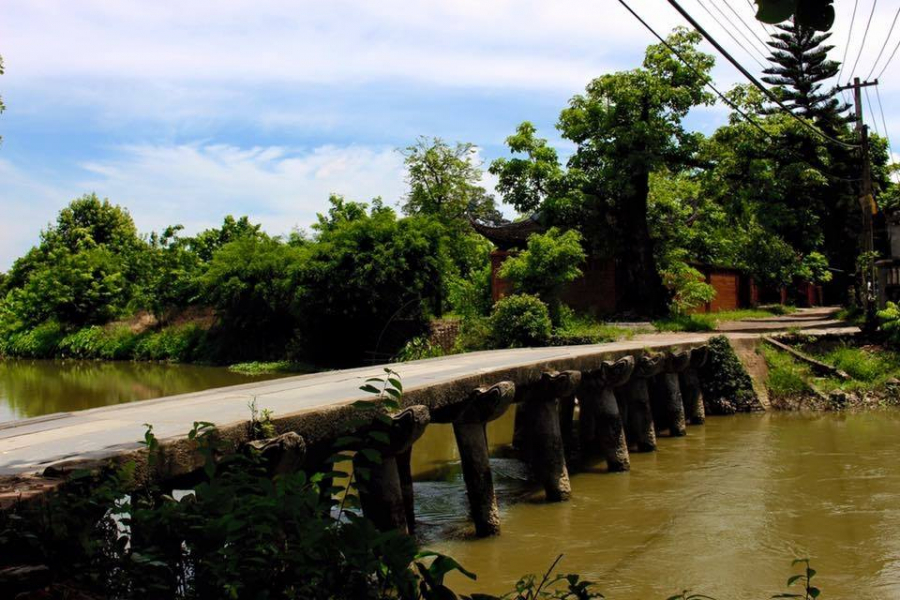
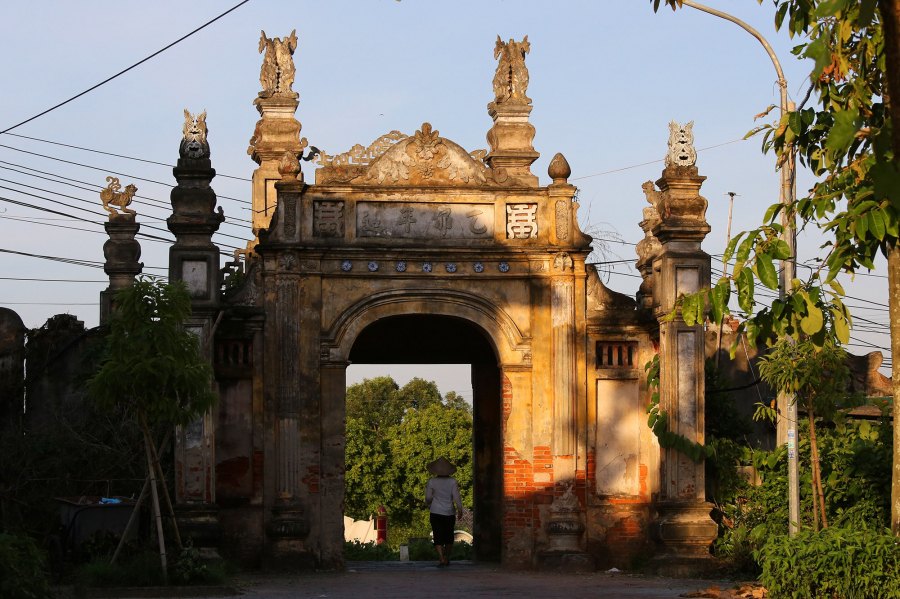
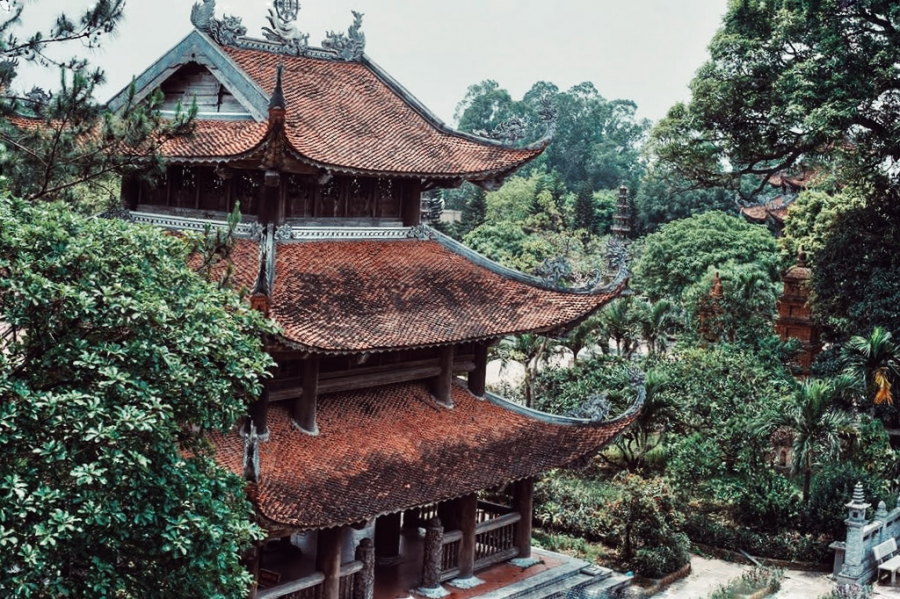
Besides Nom bridge and village gate, Nom pagoda is also a nostalgic and peaceful tourist destination when coming to Pho Hien.

Inside the ancient temple of Nom village.
Nom village is peaceful, even boringly peaceful to those who are not familiar with or do not understand the disciplined life and family traditions of the only remaining ancient village in Pho Hien.
Address:Dai Dong commune, Van Lam district, Hung Yen province
5. Thu Sy - The weaving profession is still there
Those made from bamboo were once the traditional fishing tools of the Northern people to catch fish and shrimp. When the rice fields gave way to roads, the craft gradually disappeared. Only when we come to Hung Yen and visit Thu Sy craft village can we see with our own eyes a part of the rural working life in the 20th century appear intact.
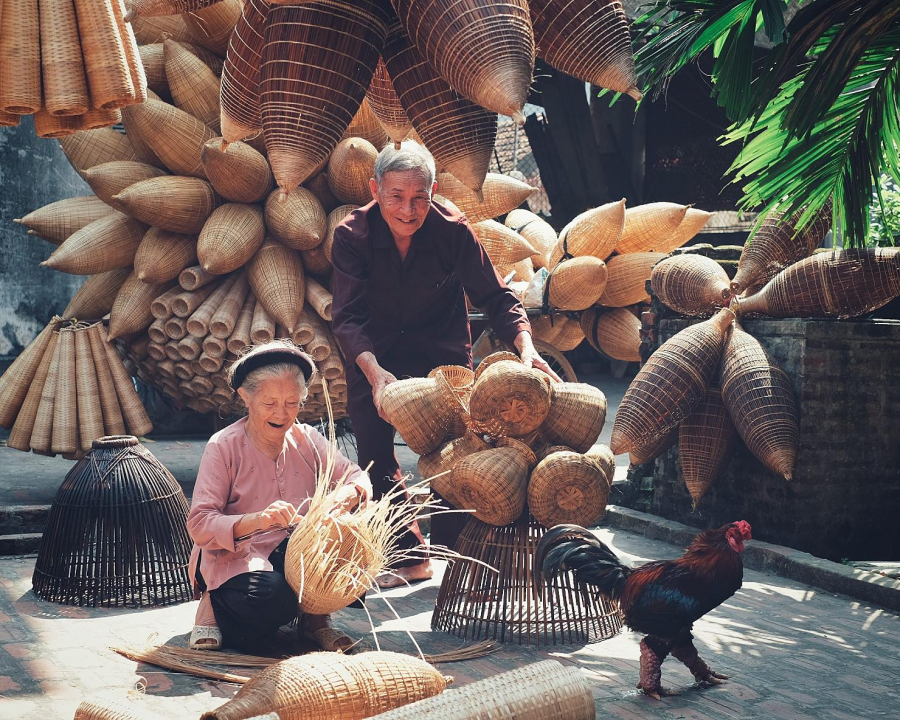
Photo: Du Sau
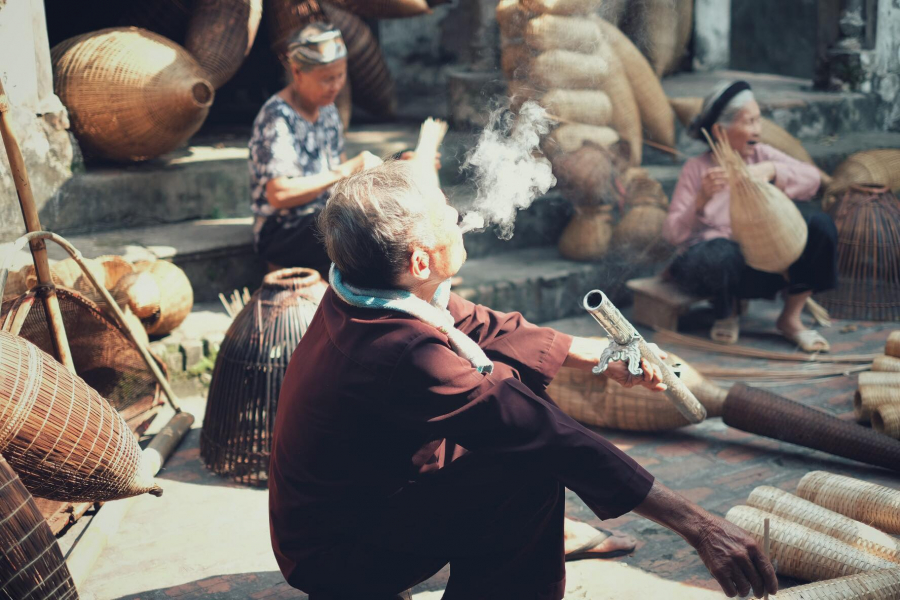
Photo: Du Sau
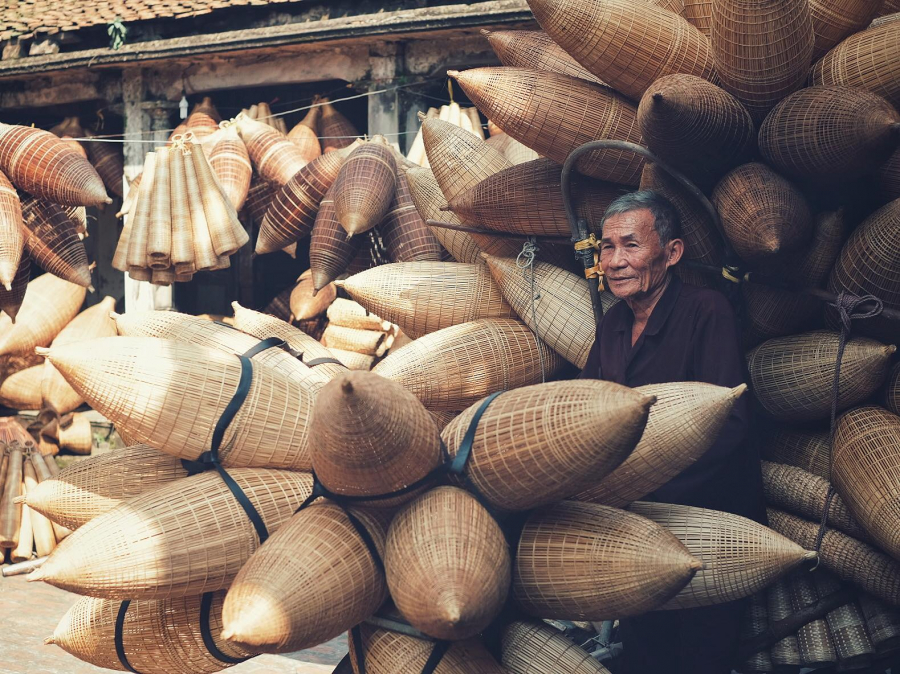
Photo: Du Sau
Through the winding village roads, the golden straw piles, the ancient tiled houses or the vast fields of mustard, everywhere visitors can see bundles of straw and baskets of the locals being spread out to dry. In Thu Sy, the old and the young weave straw together. The children busily dry bamboo strips and weave straws as part of their daily life.
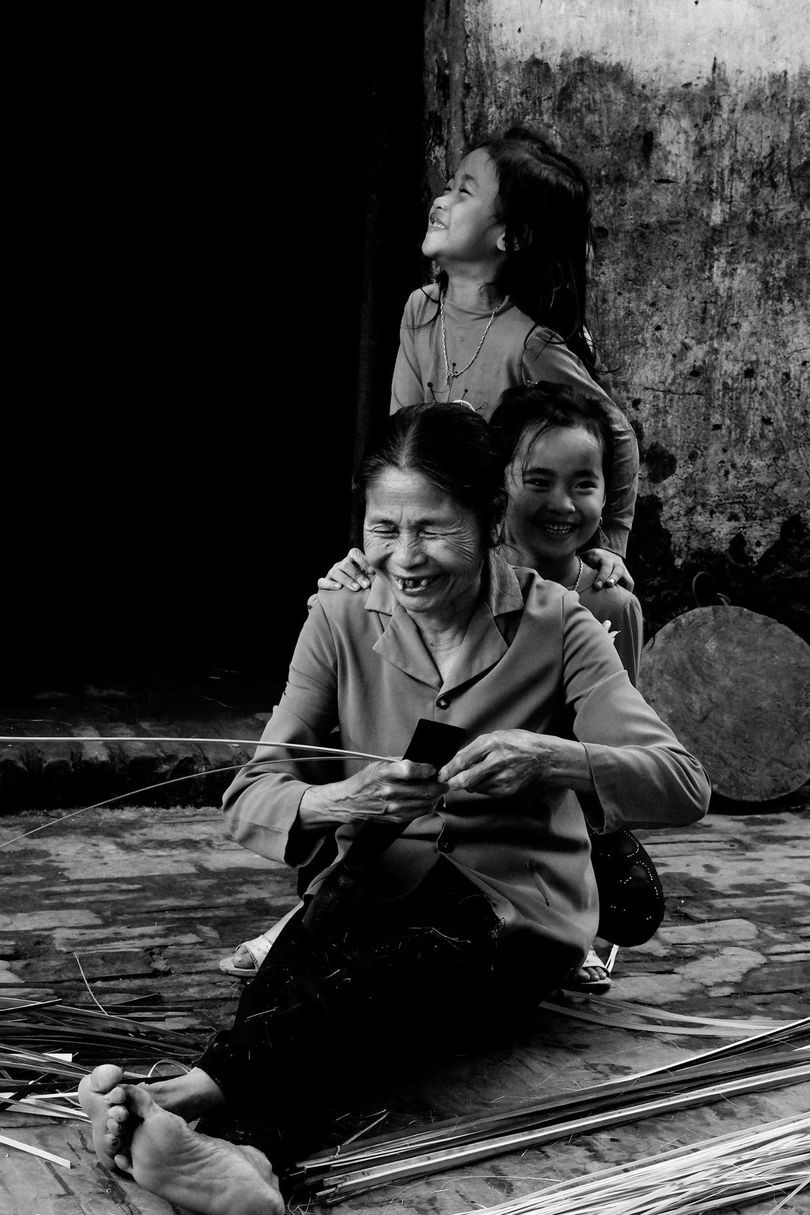
Photo: Khoi Minh
Weaving bamboo baskets contributes to the income of Thu Sy people. Villagers used to carry them on foot, but now they cycle to send them to lowland areas in Hai Duong and Hai Phong. A finished white basket is sold for about 20,000 - 25,000 VND, and a smoked brown basket is sold for about 30,000 - 40,000 VND.
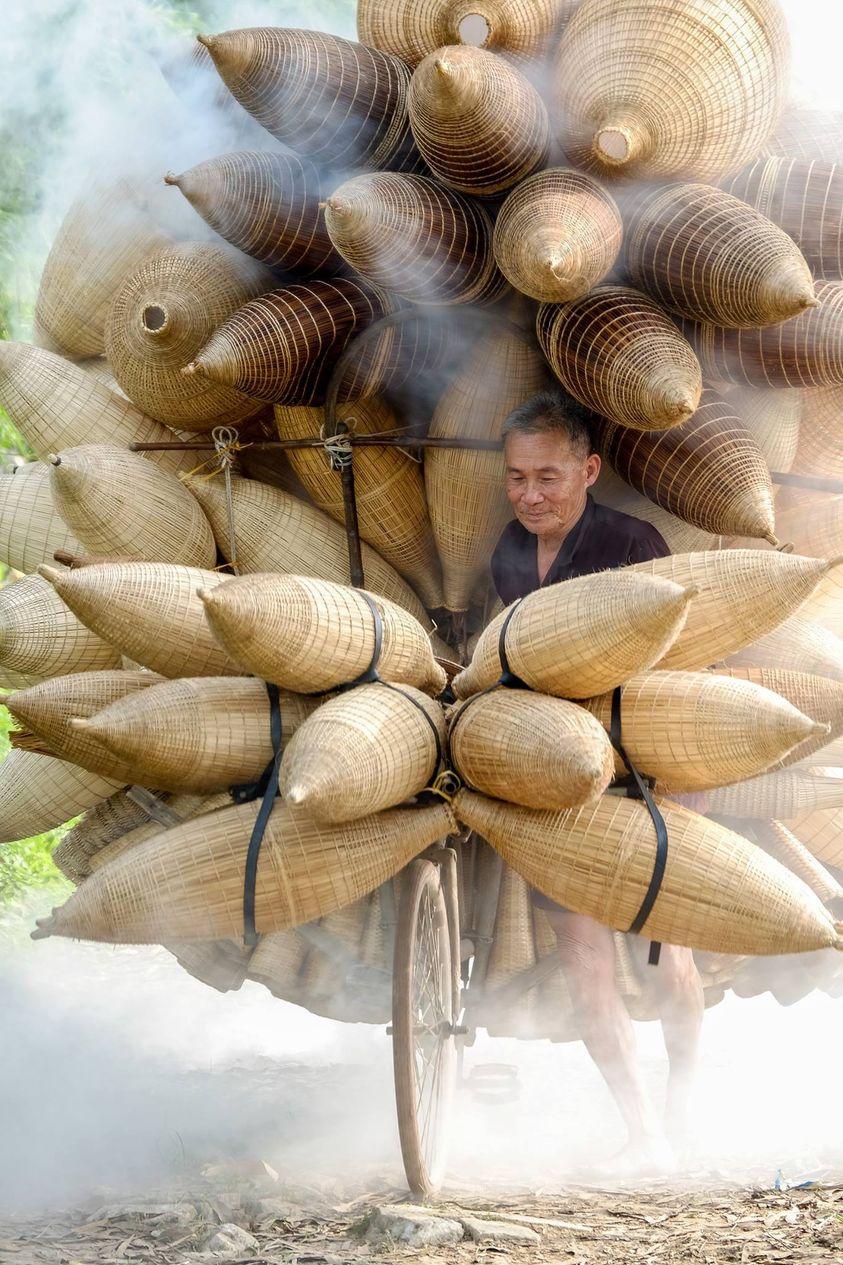
These photos of Vietnamese bicycles carrying people were voted by National Geographic as one of the most beautiful travel photos in the world in 2015. It usually takes about two hours to tie down a bicycle carrying people like that. Photo: Nguyen Dinh Thanh
Address:Thu Sy commune, Tien Lu district, Hung Yen province.
If one day you need a moment of silence, and want to find the most peaceful and simple values, then "return to the village". Passing through the majestic village gate is also entering another timeline: slow and pristine.





